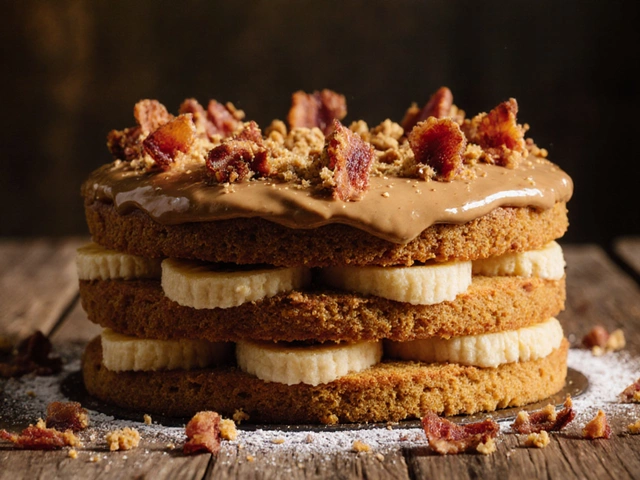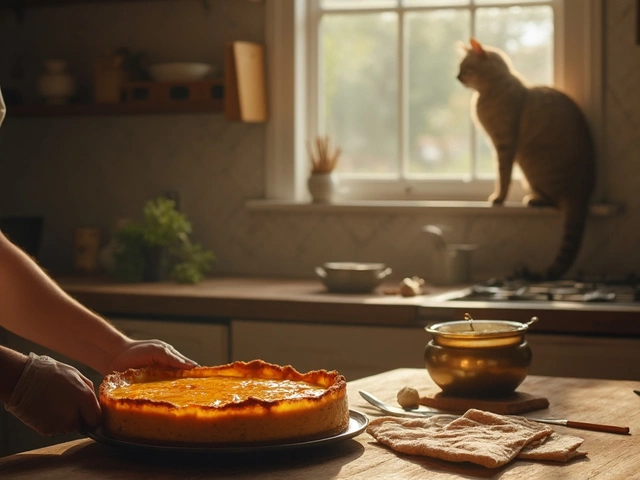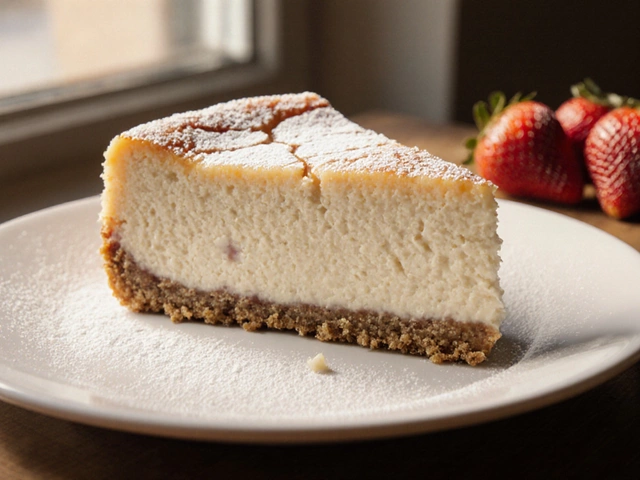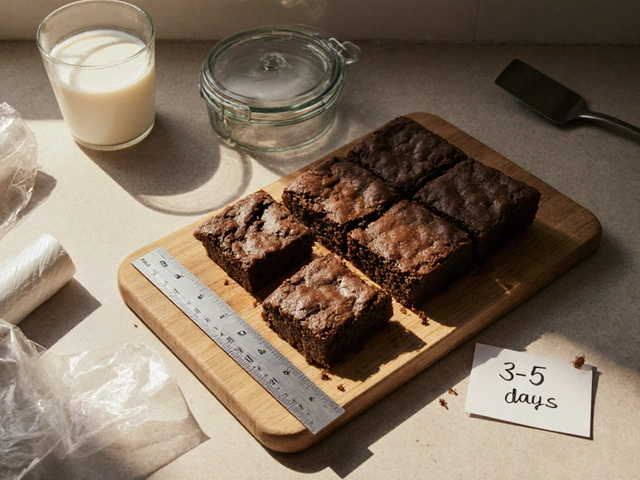Picture biting into a shell that's crisp and shatters with every bite, instantly giving way to a smooth, sweet, slightly tangy cream filled with flecks of chocolate or jewel-bright candied fruit. That’s cannoli—the Sicilian dessert everyone loves but hardly anyone knows much about beyond its irresistible taste. But who actually invented it? The story isn't just about one clever baker or a single city but a delicious tangle of cultures, myths, and maybe a little scandal thrown in for flavor. Oh, and mafia tales? They make an appearance too. This is the dessert that tells the history of Sicily in every mouthful.
The Birthplace: Tracing Cannoli Back Through Sicilian History
The island of Sicily sits like a kicked football at Italy’s toe, closer to Africa than to Rome. That matters, because Sicily hasn’t just been Italian—it’s been Greek, Roman, Arab, Norman, French, and Spanish. This mix shows up in the cannolo (that’s the singular form) more than you might realize.
So, which pocket of Sicily gets to brag about being the cannoli capital? That’d be Palermo and Caltanissetta. According to local legend, it was the nuns of Caltanissetta—or maybe the women of Palermo’s harems during the Arab rule (around 831-1091 AD)—who first piped that cheese filling into a fried tube of dough. Both stories agree on one thing: cannoli began as a Carnival treat. This holiday, marking the start of Lent, was when everyone finally used up the rich foods soon to be banned, so cannoli’s calorie bomb was actually practical.
But let’s not take the legends at face value. Sicilian food historian Giuseppe Coria traced the cannoli’s roots to the Arab era, pointing out that filled fried doughs were already part of Arab culinary tradition—like qānawāt, which even sounds a bit like cannoli. Coria argued that the use of sweetened ricotta and candied fruit also speaks to Arab influence, since they introduced sugarcane, almonds, and citrus to Sicily.
By the time the Spanish left Sicily in the 1700s, ricotta sheep cheese and the widespread use of sugar had become standard. Bakeries sold cannoli all over Palermo, and the famous dessert had become just as much a street snack as a celebration food. If you’re ever in Palermo around Carnival, you’ll see shop windows dripping with freshly piped cannoli—proof the tradition is alive and well.
Myths, Legends, and a Touch of Scandal
No dessert comes with this much lore. Let’s get right to the steamiest: some say the shape of the cannoli is inspired by, well, anatomy. Given that cannoli were Carnival treats (a time for excess and even mild mischief), early cannoli were said to represent a joke about fertility. During Arab rule, women in harems made “tubes” as a cheeky homage to their sultans—think fertility symbols, not just pastries. The word "cannoli" means “little tubes,” but the double entendre wasn’t lost on anyone.
In other stories, nuns in cloistered convents are credited with inventing the cannoli in the Middle Ages. Supposedly, they created it as a special treat for Fat Tuesday, mixing sheep’s milk ricotta with sugar, folding in bits of citrus or chocolate, and stuffing their dough tubes before frying. There’s probably some truth in both stories, considering how much women—both in religious and confined domestic settings—handled food production.
The dessert even pops up in mafia mythology. The iconic line from The Godfather—“Leave the gun. Take the cannoli.”—has cemented its place in pop culture. And while the mafia certainly didn’t invent cannoli, the dessert’s appearance in films has kept it in the spotlight, with wiseguys in New York fighting over the last one at the table.
Curious about how Italians view these stories? Most shrug and say, “They’re all true, or none are.” That’s the way it goes with culinary history—facts blend effortlessly with stories your Nonna swears by.
The Anatomy of a Classic Cannoli—And Its Many Cousins
Everyone agrees on one thing: cannoli is all about contrast. The shell—think extra crisp, thanks to a dough that includes lard or sometimes Marsala wine—should snap loudly when you bite in. Fillings have always hinged on sheep’s milk ricotta, the only ricotta many Sicilian bakeries will use, sweetened with sugar and then whipped until fluffy. Most places stud the filling with tiny chocolate pieces or candied citron. Finishing touches? A sprinkle of powdered sugar and a dusting of pistachios, or maybe a cherry on top.
But cannoli isn’t stuck in the past. You’ll find mini cannoli, chocolate-dipped shells, even vegan ricotta versions made with cashews in hipster bakeries from Milan to Melbourne. There are supermarket impostors everywhere too. In the UK, M&S tried their hand at mini versions, but ask a Sicilian and they’ll tell you—fill the shell only just before serving. Otherwise, sogginess sets in and all the magic is lost.
Here’s something you probably don’t know: Sicilians have regional variations on the classic. In Messina, fillings might include cinnamon or bits of candied pumpkin. In Catania, pistachio reigns supreme. In Palermo, orange zest and candied orange peel are popular. If you ever visit Sicily, you’ll see bakeries selling cannoli shells and filling separately, so locals can fill them at home and keep the texture just right.
Why does this matter? It reveals just how much Sicilians care about the texture and freshness of their dessert. A 2022 survey by Italian food magazine "Gambero Rosso" found that over 75% of Sicilians rank “crisp shell” as the number one requirement for a perfect cannoli, ahead of sweetness or portion size.
| Region | Shell Add-ons | Filling Flavours | Popular Toppings |
|---|---|---|---|
| Palermo | Marsala wine in dough | Sheep ricotta, candied orange | Chopped pistachios, powdered sugar |
| Catania | Cocoa powder in shell | Pistachio ricotta | Pistachio crumbs |
| Messina | Cinnamon in dough | Candied pumpkin | Chocolate chips, candied fruit |
| Trapani | Honey glaze | Extra creamy ricotta | Garnished cherries |
The heart of cannoli comes down to a few things: fresh ricotta, overnight draining, and speedy filling. If you’ve ever tried making cannoli at home, you know the shell can be tricky. A real cannoli shell includes lard for crispness, and the dough has to rest at least two hours for the magic to happen. Want a home trick? After frying, cool the shells on a wire rack and wrap them in foil—this will help keep them crisp until you’re really ready to fill them.
Cannoli Around the World—How Immigration Spread Italy’s Sweetest Secret
When Italians moved abroad—especially to America in the early 20th century—they didn’t leave their food behind. New York’s Little Italy became ground zero for cannoli in the U.S., thanks to Sicilian immigrants opening bakeries. By the 1930s, you couldn’t walk Mulberry Street without seeing these pastries. The classic recipe didn’t mutate much until the 1980s, when Italian-Americans started experimenting with chocolate-covered shells and new flavors to tempt customers.
Back in Sicily, cannoli traditions stay strong. At Palermo’s Ballarò market, you’ll still hear grannies arguing (“Ma è troppo dolce!”) about who makes the best filling, and only the brave use cow’s milk ricotta, since sheep’s milk fans guard their loyalty fiercely. The dessert even became part of Sicilian wedding feasts, representing fertility and luck—and yes, some believe that, too, goes back to those saucy Carnival origins.
Fans of cannoli now live everywhere. You’ll spot queues in London and even Tokyo, where new bakeries offer inventive takes—matcha fillings, anyone? The internet means you can even order cannoli “kits” to refill shells at home, with overnight delivery in America. Some pastry chefs freeze the shells before frying for extra crispness, a trick picked up from Sicily’s own street bakers.
If you want to impress friends, try pairing cannoli with Sicily’s fortified Marsala wine—the slightly sweet, caramel-hued tipple echoes the flavors in the shell. Or go old-school and pair with espresso, savored in tiny cups. Italians use the phrase “la dolce vita” a lot, but sitting with a fresh cannoli and coffee? That’s really what they mean.
So, who invented cannoli? The answer’s tangled—like a family recipe handed down through the generations. Cannoli origin doesn’t come from one chef or a single spark of genius. It’s what happens when cultures collide, when women baked in secret kitchens, and when Sicilians celebrated Carnival with mischief and sweetness. Next time you bite in, know you’re tasting centuries of rebellion, innovation, and the celebration of life’s richest moments.





